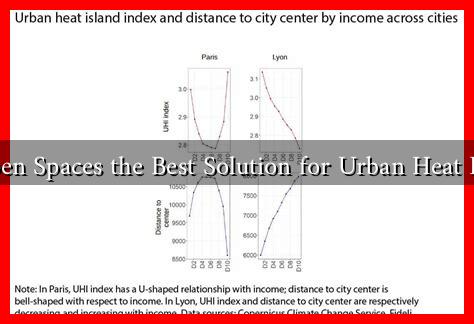-
Table of Contents
Are Open Spaces the Best Solution for Urban Heat Islands?
Urban Heat Islands (UHIs) are a growing concern in cities around the world, characterized by significantly higher temperatures in urban areas compared to their rural surroundings. This phenomenon is primarily caused by human activities, including the extensive use of concrete, asphalt, and other materials that absorb and retain heat. As cities continue to expand, the need for effective solutions to mitigate UHI effects becomes increasingly urgent. One proposed solution is the creation and enhancement of open spaces. But are open spaces truly the best remedy for this pressing issue? This article explores the effectiveness of open spaces in combating UHIs, supported by relevant examples and research.
Understanding Urban Heat Islands
Before delving into the role of open spaces, it is essential to understand what Urban Heat Islands are and their implications. UHIs can lead to:
- Increased energy consumption due to higher demand for air conditioning.
- Elevated emissions of air pollutants and greenhouse gases.
- Worsened water quality due to increased runoff and higher temperatures.
- Negative impacts on human health, including heat-related illnesses.
According to the U.S. Environmental Protection Agency (EPA), urban areas can be 2 to 5 degrees Fahrenheit warmer than surrounding rural areas, with some cities experiencing temperature differences of up to 10 degrees Fahrenheit.
The Role of Open Spaces in Mitigating UHIs
Open spaces, including parks, green roofs, and urban forests, are often touted as effective solutions for mitigating the effects of UHIs. Here are several ways in which open spaces contribute to cooling urban environments:
- Vegetation and Shade: Trees and plants provide shade and release moisture through a process called transpiration, which cools the air.
- Reduction of Heat Absorption: Green spaces replace heat-absorbing surfaces like asphalt and concrete, lowering surface temperatures.
- Improved Air Quality: Vegetation helps filter pollutants and improves overall air quality, which can be particularly beneficial in densely populated areas.
- Enhanced Biodiversity: Open spaces can support local wildlife and promote biodiversity, contributing to healthier ecosystems.
Case Studies: Success Stories of Open Spaces
Several cities have successfully implemented open spaces to combat UHIs, showcasing the potential benefits:
- New York City: The NYC CoolRoofs initiative has transformed rooftops into green spaces, reducing temperatures and energy costs. Studies show that green roofs can lower surface temperatures by up to 40 degrees Fahrenheit.
- Los Angeles: The city’s Urban Forest Program aims to plant 1 million trees by 2028, which is expected to reduce temperatures by 3 to 5 degrees Fahrenheit in targeted areas.
- Singapore: Known for its extensive greenery, Singapore has integrated parks and vertical gardens into its urban planning, resulting in a cooler urban environment and improved air quality.
Limitations of Open Spaces
While open spaces offer numerous benefits, they are not a panacea for Urban Heat Islands. Some limitations include:
- Space Constraints: In densely populated cities, finding space for new parks or green areas can be challenging.
- Maintenance Costs: Open spaces require ongoing maintenance, which can strain municipal budgets.
- Climate Considerations: In regions with limited rainfall, maintaining green spaces may require significant water resources.
Conclusion: A Multifaceted Approach is Key
Open spaces play a crucial role in mitigating the effects of Urban Heat Islands, offering benefits such as cooling, improved air quality, and enhanced biodiversity. However, they should be part of a broader strategy that includes other solutions like reflective materials, green building practices, and urban planning reforms. As cities continue to grapple with the challenges posed by climate change and urbanization, a multifaceted approach that incorporates open spaces alongside other innovative solutions will be essential for creating sustainable and livable urban environments.
For more information on Urban Heat Islands and potential solutions, visit the EPA’s Urban Heat Island website.

